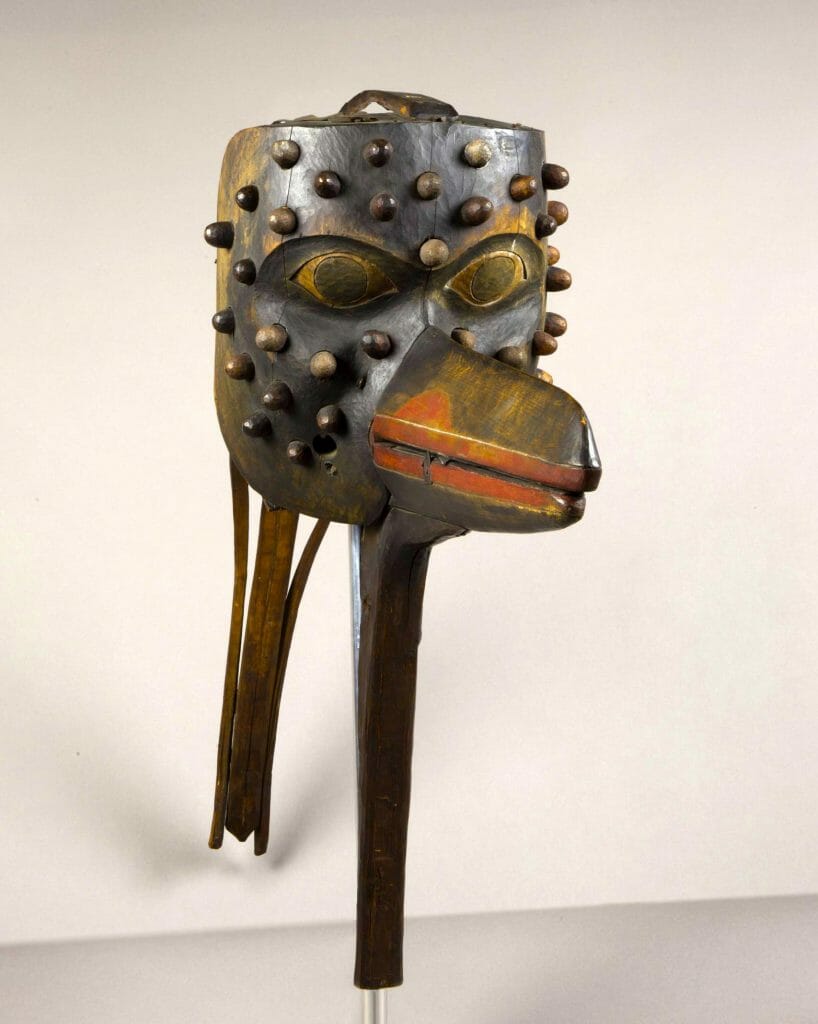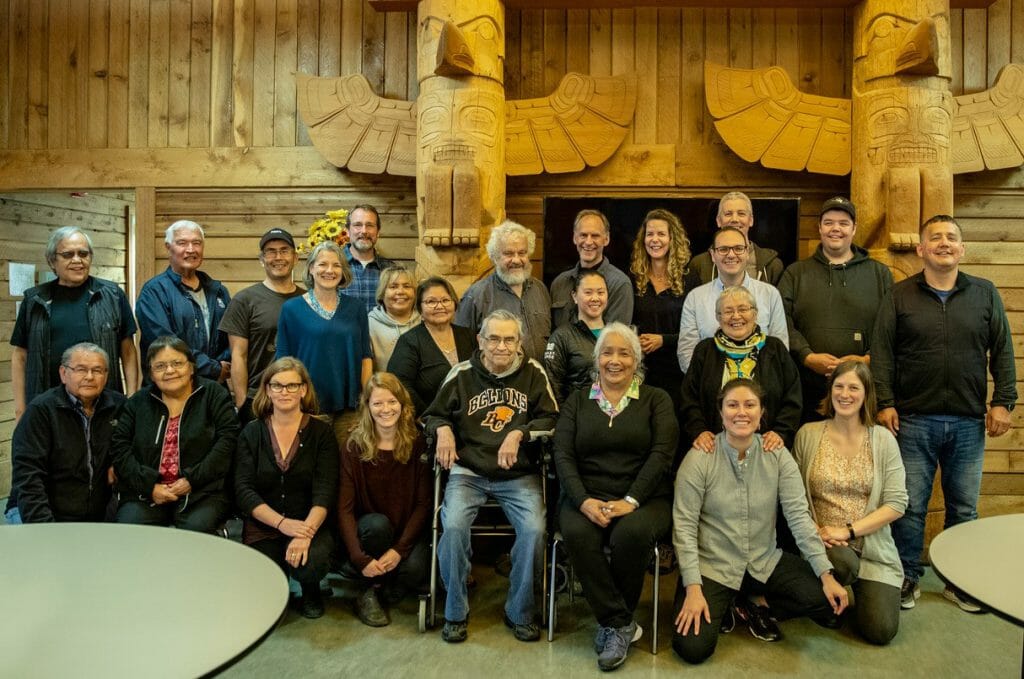Estimated Reading time

7 Mins
Precedented Times, by Hilistis Pauline Waterfall

“Precedent” according to Merriam Webster Dictionary means “prior in time, order or significance.”
With this pandemic crisis, the description “unprecedented” times is being used to describe what is happening with the COVID-19 health crisis. To subscribe to this notion is to deny or negate the previous pandemics that First Nations peoples have experienced historically. In 1780-82, 1831-34, 1862-63, 1888-89 smallpox epidemics had catastrophic impacts upon First peoples in B.C. and across Canada greatly reducing previous numbers of people who didn’t have immunity against this dreaded disease. In 1792, Captain George Vancouver documented coming upon barren villages where human bones were scattered with no survivors. One account was that there was no one left to bury the dead. In fact, this mask was carved to depict small pox infection and is stored in the Museum of Vancouver.

Coastal First peoples including Haíɫhzaqv canoed to “Macdoolia” Victoria when it was being built. We have stories of how as accomplished carpenters some of our people helped in the construction of this city. It was at Macdoolia on June 11, 1862 and over a period of 15 days, the gunboat “Forward” towed 26 canoes full of smallpox infected First peoples to Fort Rupert B.C. My grandmother Hilistis shared stories about this devastating period when Haíɫhzaqv canoes returned home with survivors who contracted and passed on this disease to our people who lived in our isolated and pristine homelands. Our oral history tells about villages that were completely wiped out.
From 1847-1850, an epidemic of measles took a great toll on First Peoples’ population in Canada. In 1918, a Spanish flu epidemic further created apocalyptic devastation upon our people. My 93-year old mother Peggy Housty told me the story of how her maternal grandmother lived through this epidemic and talked about the nightmare of so many deaths every day that proper burials couldn’t be performed let alone being able to practice our mortuary ceremonies and customs. Her grandmother spoke about mass burials with unmarked grave sites. She witnessed the chaos, confusion, and desolation that our ancestors of the day went through.
Furthermore, the removal of our children to attend residential schools far from home was a form of plague that was as devastating to our people’s health and well being as the diseases that were rendered upon us. This took place for at least 160 years, or over 5 generations. To use an analogy of impacts, in March I became a great grandmother and with my mother still alive, our five generations of family would have been completely eradicated by the residential school experience. The devastating psychosomatic and health impacts continue to afflict many of our people since the last “school” closed in 1996. In our Haíɫhzaqv experience, local control of education took place in 1976—44 years ago. One generation is defined at about 30 years—so, we have had our children remain with us year-round for a little over one generation. During this one generation, we’ve had to re-learn how to be a family, how to communicate effectively, how to parent and discipline healthfully—in brief, how to decolonize ourselves from insidious learned behaviors that rendered many of us to be dependent with a sense of helplessness.
The removal of our children to attend residential schools far from home was a form of plague that was as devastating to our people’s health and well being as the diseases that were rendered upon us.
Over the one generation, we have worked hard to rebuild our Haíɫhzaqv identity and place. We have revitalized our cultural ways. We have renewed our ceremonial practices. We are regaining our Haíɫhzaqv language. We work in solidarity to protect what we have left including our homelands and waters and all life therein.
In those five or more generations, we experienced what society in general is now experiencing. As a residential school survivor, I was removed as a pre-teen and placed in an institute that was devoid of warmth and love. There was no model of family structure and we were left to our own devices to create fragile and tenuous relationships in rigidly segregated circumstances. The abject loneliness that I felt was shared by my dormitory peers. Many nights we cried ourselves to sleep missing the warmth, security, affection and support of our parents and home communities.
So, the loneliness experienced during this pandemic time that forces isolation is not new to me. What is unsettling is the 64-year old buried loneliness memory that is being unhinged and unearthed. So, self-talk and debriefing with my husband helps to keep this demon at bay and reinforce that I am once again safe, secure, loved and supported.
So, the issue of food security is not new to me—nor was it new to my father who attended residential school and told me about the unending hunger he and his peers experienced with the inadequate foreign foods that were forced upon them. I remember the deep longing for a feed of traditional marine foods—smoked salmon, fresh herring eggs, roasted seaweed and so on. All I could do was yearn and dream about what used to be my normal diet. Is it any wonder that my pantry shelves are well stocked with preserved foods including canned salmon, jarred deer meat, jam etc.? Is it any wonder why my freezer is full of traditional foods prepared and harvested for these very times when the grocery store shelves are empty? We will never be hungry again despite this pandemic.
So, being unable to hug my loved ones is not new to me. In fact, because we were punished for emoting, we learned to build thick protective walls around our hearts. My 91-year old father died without once telling me that he loved me—even though I knew that he did, I longed to hear him say this. In retrospect, how could he when he was punished repeatedly for showing any emotions. This included not being allowed to cry or show emotions while being whipped with thick belts. Building trust and relearning how to emote and express love has been a healing and necessary process for me. Now, I have to self-distance and not practice what I worked so hard to relearn. Listening to the stories of others in the larger society express their remorse and sadness about distancing from loved ones is not new to me and I have to work hard to remain empathetic to their plight and needs.
Being unable to hug my loved ones is not new to me. In fact, because we were punished for emoting, we learned to build thick protective walls around our hearts.
The most difficult challenge I have now is not to be able to hold my 6-week old great grandchild or be in her company. This is compensated somewhat by being able to do FaceTime visits with her. Imagine how my mother feels in being socially isolated from the large family that she so lovingly and carefully raised, mentored and guided over these five generations. This is particularly poignant given that five of her children were taken from her when they were very young and returned as young adults. In my case, I struggled to know how to fit into my family unit again after being displaced for so long. When I see video clips in the news of aged parents detained in nursing homes and only being able to see loved ones through window panes, I am grateful that we are able to take care of our mother and provide for her needs even though hugs are tabled until this is all over. I relate to the sadness that those families feel.
Worrying about having hair dressing appointments or manicures is a privileged world problem. In residential schools, head shavings or bowl-shaped haircuts were the norm. Dirty fingernails from working in large garden plots or scrubbing floors was the norm.
What is new is learning how to be in a relationship with myself. I’ve always been in situations where I was never alone. My formative years were spent with a large immediate and extended family and many friends. My teen years were spent in communal settings at residential school and boarding homes. I have three adult children, six grandchildren and one great grandchild and I have worked diligently for 53 years to build a foundation upon which my family can grow and flourish. Now, there is the need to be separated, which is necessary and important. For the first time, I have to learn how to be in a relationship with myself. This means having the space and time to excavate buried memories and work through them. This is a healing time punctuated by moments of sadness and loneliness. On the other hand, I am able to communicate and debrief with my husband who understands completely the metamorphosis that I am experiencing. My father used to remind me that there are always upsides to downsides and this pandemic is revealing that with mixed blessings.
My father used to remind me that there are always upsides to downsides and this pandemic is revealing that with mixed blessings.
So, this is not an unprecedented time for us First Nations who have gone through many challenges and changes that have forced us to be strong, resilient and adaptive. As with all things under the heavens, life renews itself and good things are coming out of this time as long as our hearts and minds remain open and positive.
Shared with deep gratitude to Hilistis Pauline Waterfall and to our friends at Coastal First Nations who originally published this story.

